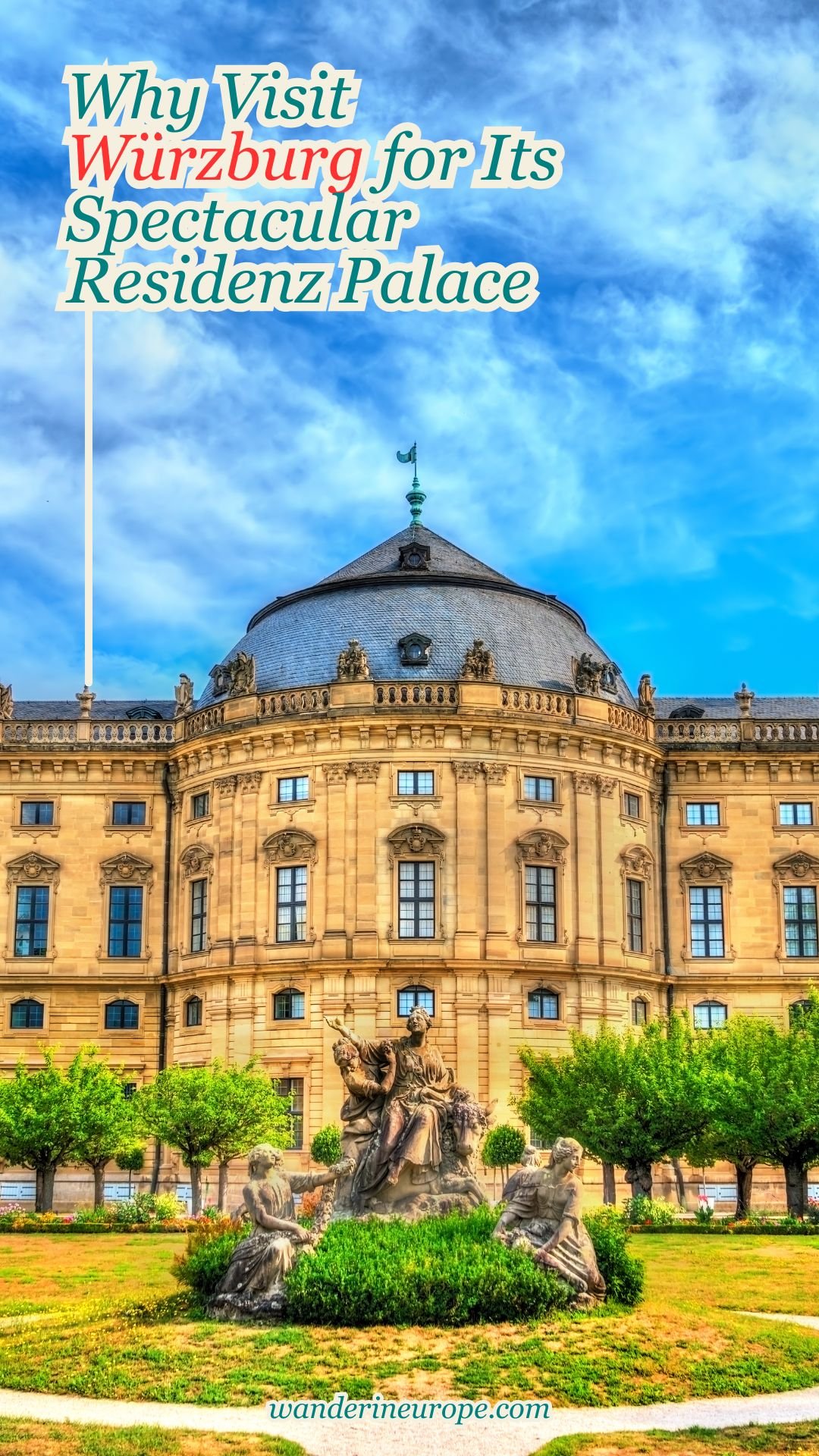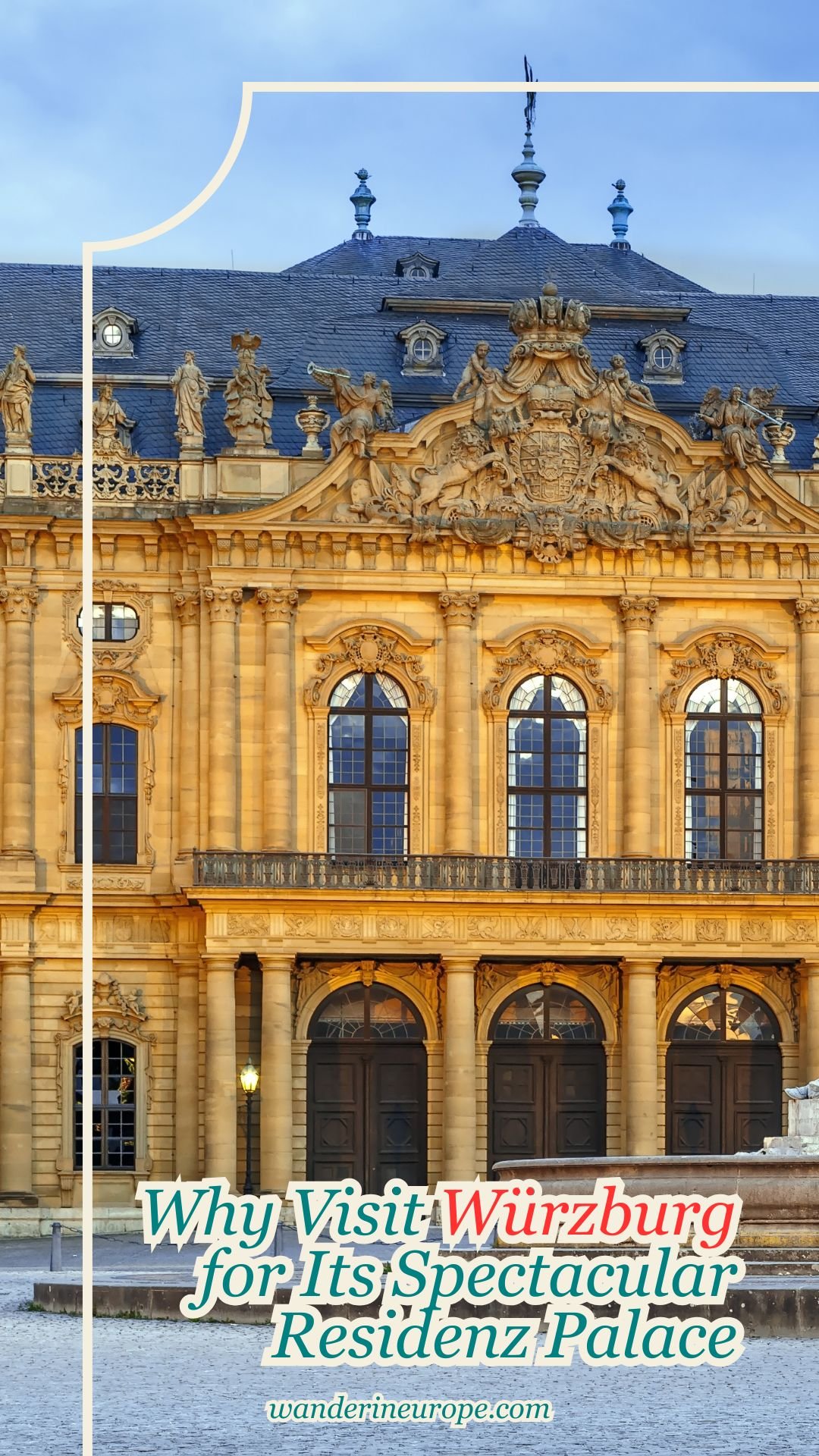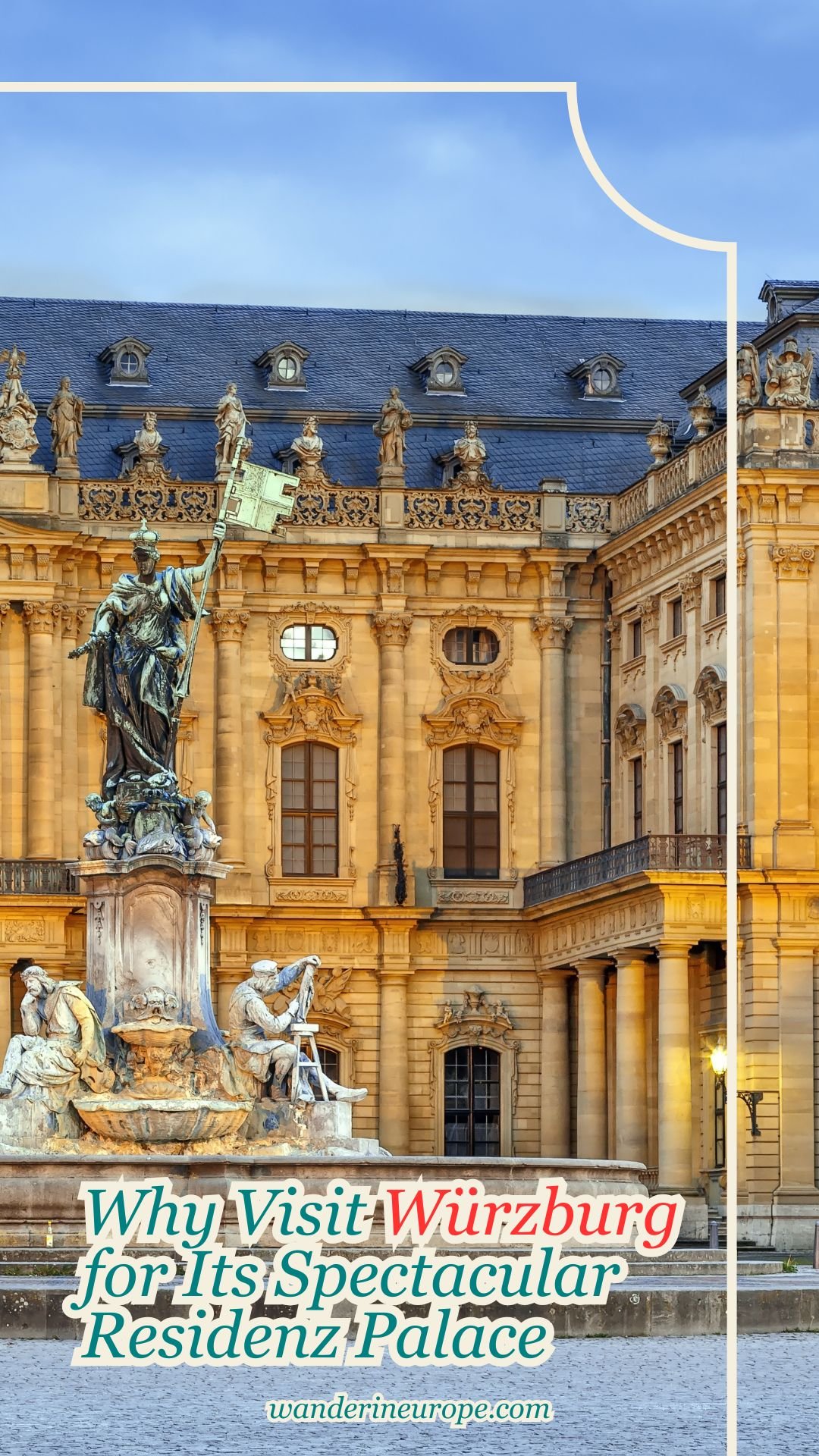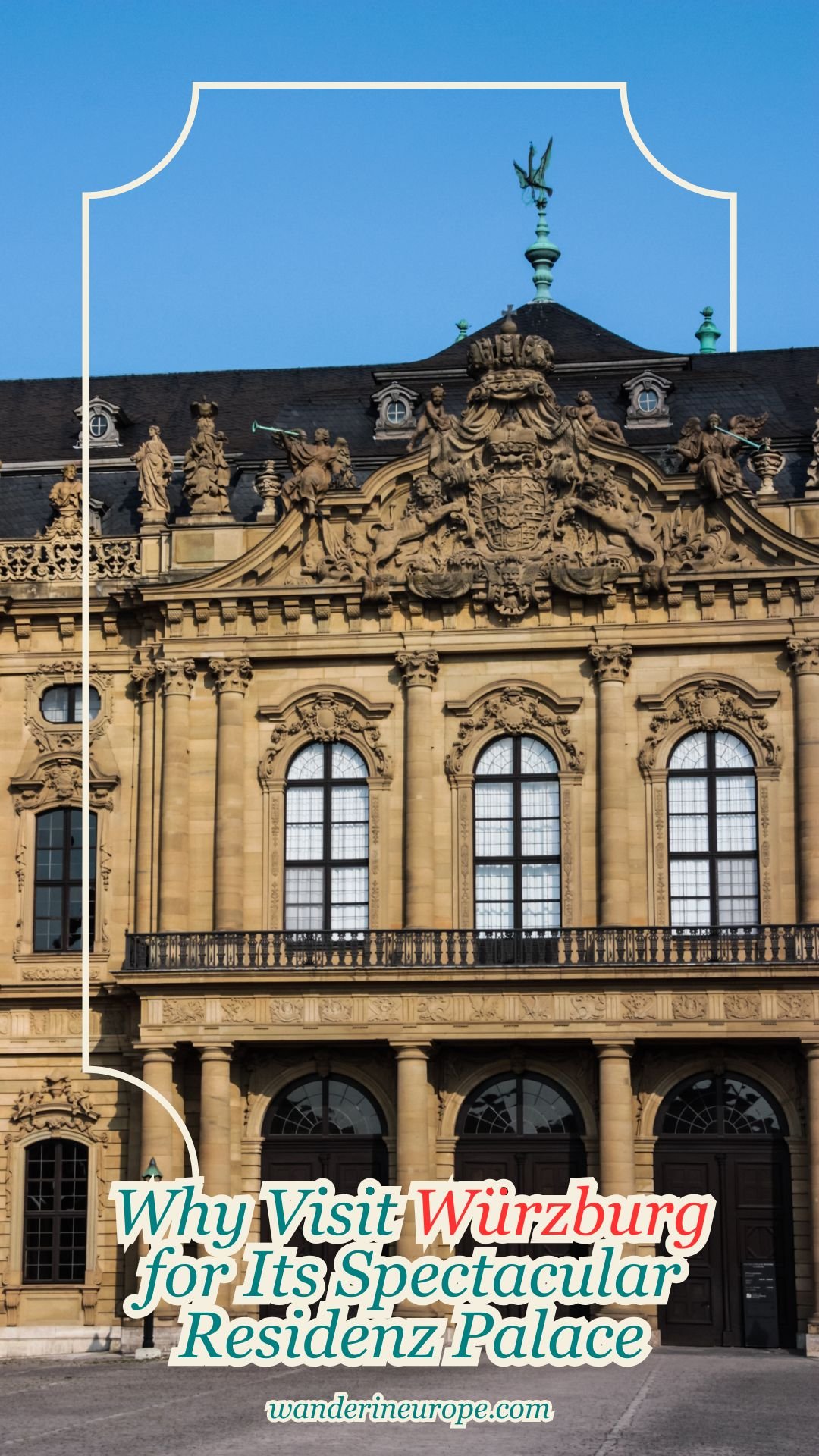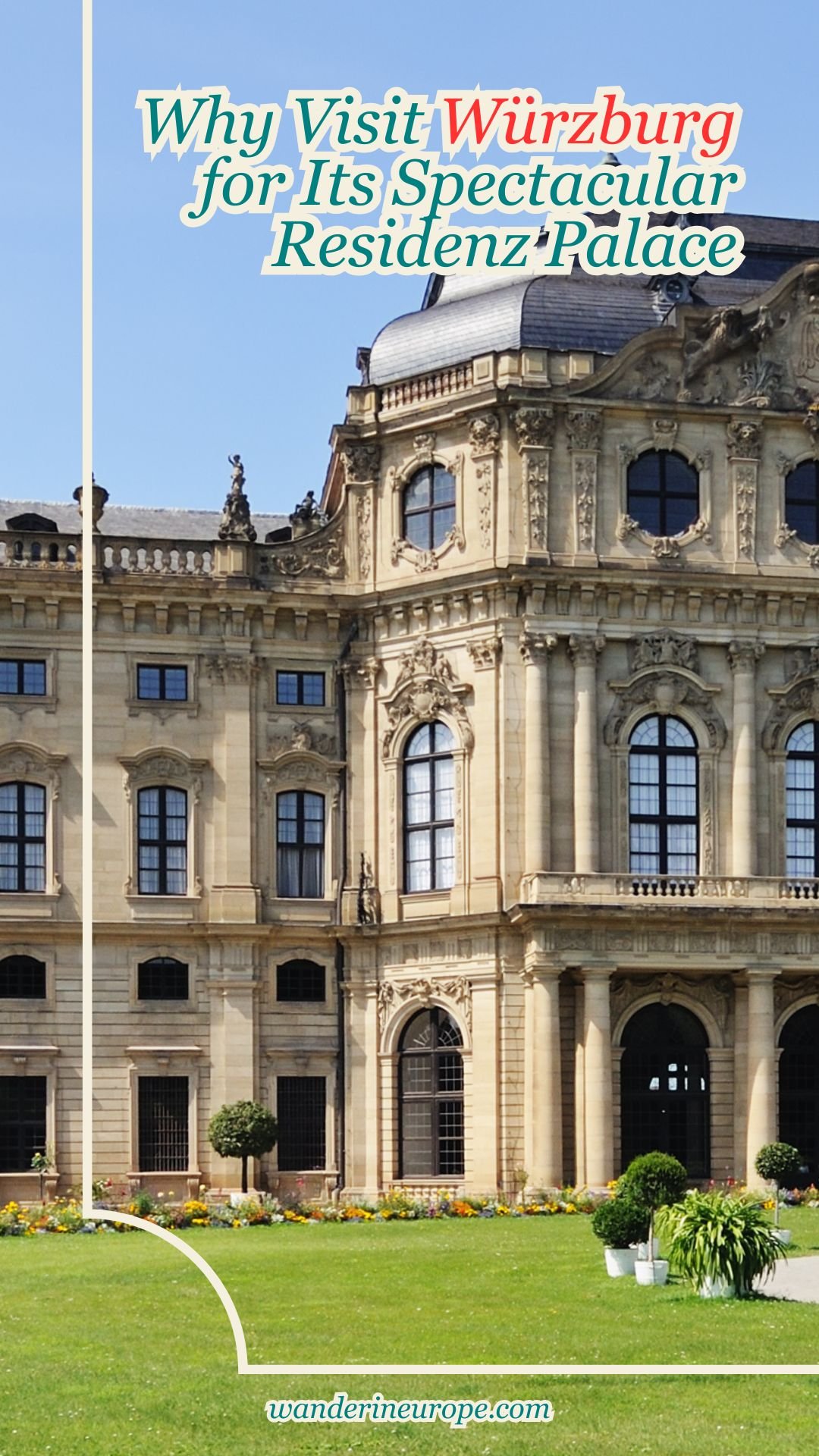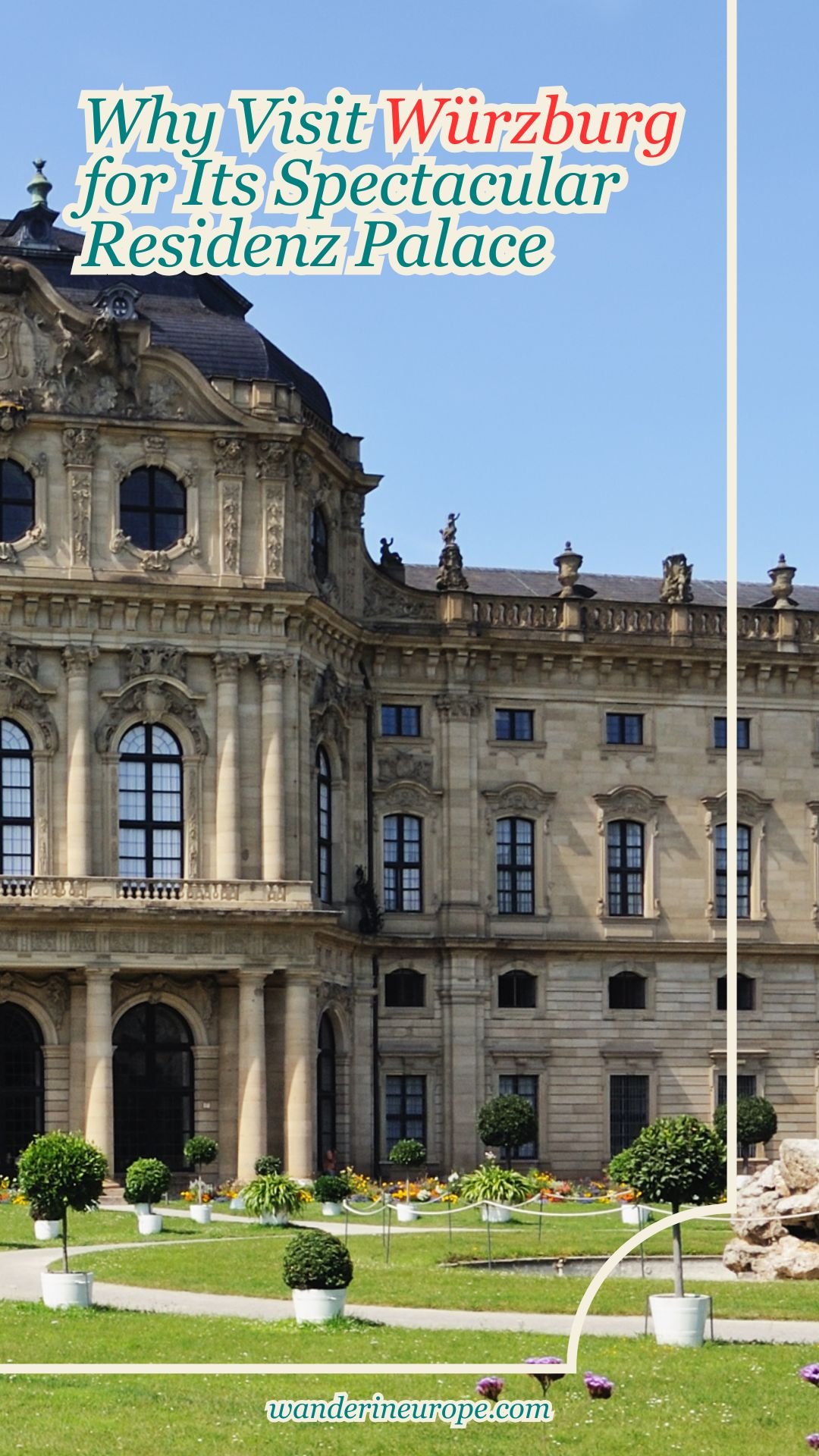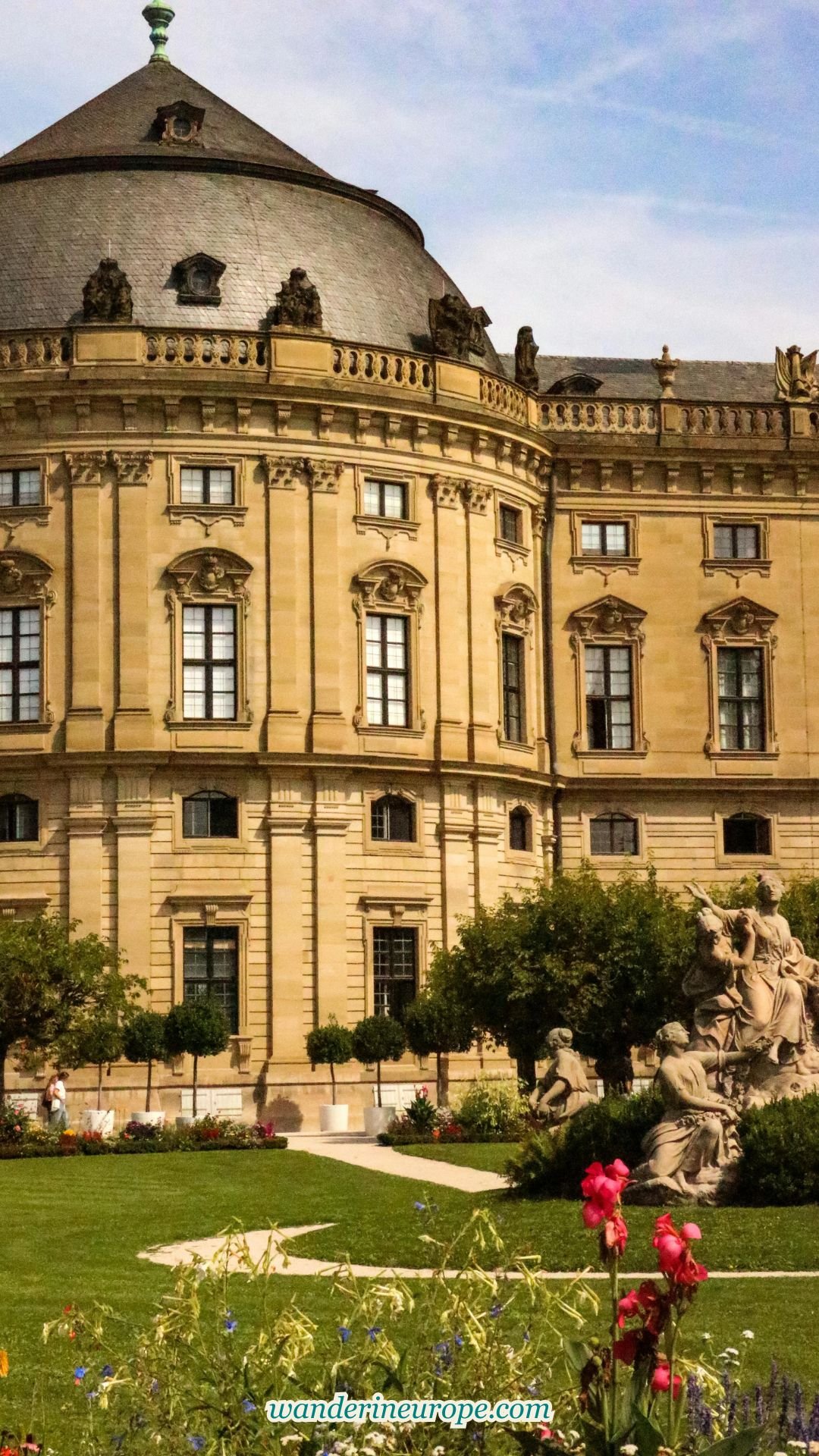Why Visit Würzburg for Its Spectacular Residenz Palace
WanderInEurope is reader-supported. Affiliate links and ads help us keep creating useful content for you.
The churches in Wurzburg are just a part of the amazing architecture you’ll find in the city. Another big highlight is the Wurzburg Residence Palace, which is surely worth a visit and definitely a reason to visit Wurzburg. Imagine stepping into a building that’s basically a masterpiece.

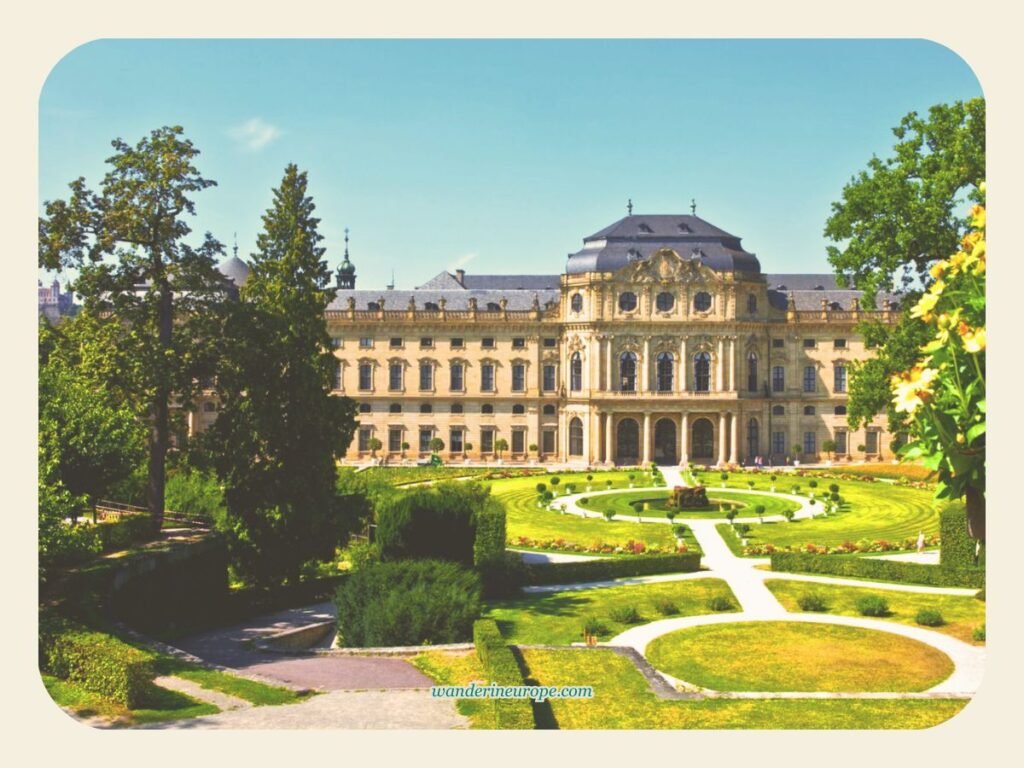

The Wurzburg Residence Palace is a stunning Baroque building that’s recognized by UNESCO as one of the largest and most beautiful palaces in Germany. Built in the 18th century by some of the best architects and craftsmen from around the world, led by Balthasar Neumann, it’s truly a sight to behold.
Spanning nearly 15 hectares, the palace has two main attractions: the palace itself and the promenade. The palace has two floors, each filled with incredible things to see. For anyone who loves to explore, it’s a dream come true. The ceilings and walls are works of art themselves, covered in stuccos and frescoes that make for an overwhelming visual experience.
Before taking you through some parts of the Wurzburg Residence Palace that I think are especially cool… Please note: I can’t share pictures of the inside because photos aren’t allowed (commercially). However, the videos below will give you a good idea of what to expect when you visit the palace.
Unmissable Parts of Wurzburg Residenz Palace
From great hotel deals to skip-the-line tickets and affordable eSim to cheap rentals, click here for the best hotel deals and more travel discounts.
More in Wurzburg
If you’re planning a trip to Wurzburg, don’t forget to check out other attractions like the vineyards, cellars, and the Marienberg Fortress, which offers great views of the city. There’s so much more to see in Wurzburg besides the amazing Residenz Palace!
For a convenient, unique, or more enriching visit, check out these experiences and services:


Pin this to save it for later or bookmark it to read anytime.


